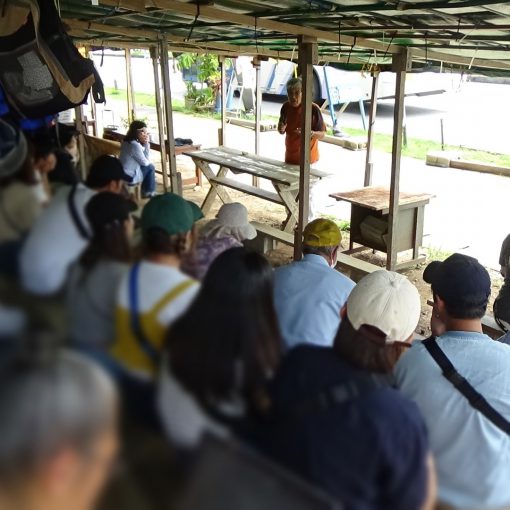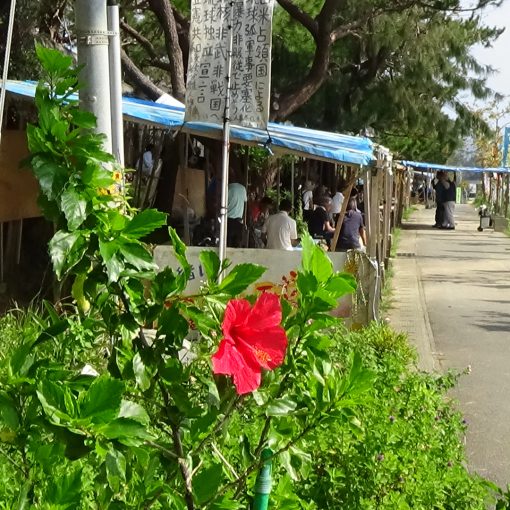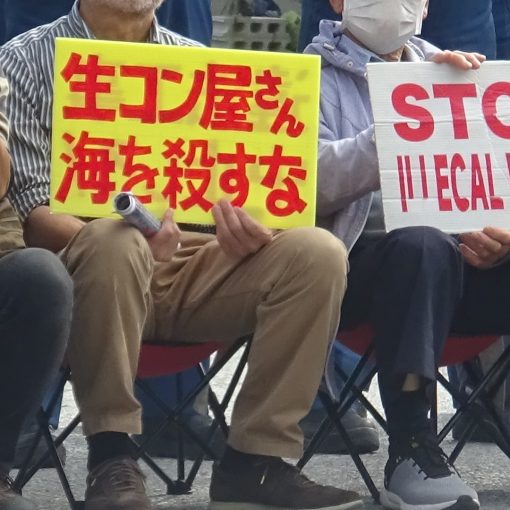August 21, 2020 Ryukyu Shimpo
During a mass outbreak of the novel coronavirus occurred on the U.S. Navy’s USS Theodore Roosevelt en route, the U.S. military considered a plan to transport about 3,000 crewmembers to U.S. military bases in Okinawa. The crew eventually disembarked in Guam, but they have been withdrawn, so there has been no talk of remedying the situation.
By this stage, bringing a large group of people, including people who test positive for the coronavirus, to other countries’ territories should be considered an absolutely unacceptable option. Clearly the U.S. military’s perception is that it can freely use Okinawa as if it was U.S. territory. The continuation of such circumstances is due to nothing other than the weak attitude of the Japanese central government, which has come to accept the U.S. military’s stance.
The Japanese government must correct the U.S. military’s designs in terms of the planned transport of these crewmembers to Okinawa. It is essential that we strongly protect so that coronavirus infection is not brought in by way of the U.S. military.
According to an investigative report from the U.S. Navy, three crewmembers were confirmed to have the novel coronavirus on March 24, when the USS Roosevelt was en route from Vietnam to Guam in the western Pacific Ocean. In considering an isolation location for the crewmembers, the 7th Fleet Headquarters calculated that a total of 3,000 rooms could be secured on Marine Corps military bases in Okinawa, such as Futenma Air Station, and initially planned to transport crewmembers from the aircraft carrier to Okinawa by air route.
There was a possibility that the crewmembers would be transported from the USS Roosevelt to Okinawa and settle in prior to acceptance from the Japanese government.
Under Article 9 of the U.S.-Japan Status of Forces Agreement, U.S. military personnel are allowed special privileges relating to emigration and immigration, and U.S. military troops may directly enter military bases across Japan by U.S. military aircraft, exempt from Japan’s medical inspections.
In whatever manner Okinawa and Japan attempt to prevent the coronavirus being brought in over national boarders, the presence of the U.S. military bases is an unfortunate hole in the countermeasures. Initially, the U.S. military made no public announcement about the numbers of people infected within Okinawa. Also, circumstances, such as the infection status on military bases due to U.S. troops entering Japan and the medical care set-up, have been kept entirely in a black box.
In the mass outbreak, out of the total of about 4,800 crewmembers on the USS Roosevelt, 1,248 people or one in four people were infected, and one person died.
If 3,000 U.S. troops from among this crew disembark in Okinawa, there is a high possibility that the infection will spread off-base, and that Okinawan society will face severe conditions. From observing the current infection status in Okinawa, it is easy to presume that one factor was the spread of infection on the U.S. military bases.
From reading the U.S. Navy report, it can be understood that Okinawa is being used as a location for receiving infected persons in the U.S. military. When the plan for transporting these crewmembers was being formulated, there was no prior consultation or discussion of medical inspections with the Japanese government or the Okinawa Prefectural Government. Extraterritorial conduct is being permitted.
Now there is fear that infected persons have quietly been brought to places other than U.S. military bases on Okinawa. It is essential that we firmly handle this situation in order to not permit a second plan for such transport to Okinawa.
(English translation by T&CT and Erin Jones)





